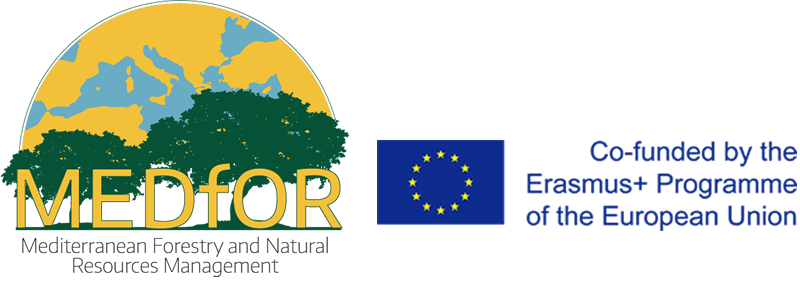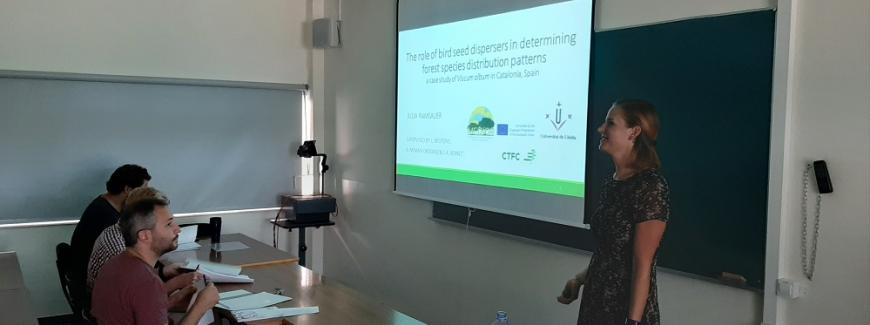Thesis Defense: Julia Ramsauer !
26/09/2019Congratulations to our MEDfOR student Julia Ramsauer who defended their thesis at the University of Lleida! Her thesis was developed in cooperation with CTFC, the Forest Science and Technology Centre of Catalonia (CTFC).
She was supervisied by Dr. Lluís Brotons, and Dr. Alejandra Morán-Ordóñez from CTFC and Dr. José Antonio Bonet fom UdL
The MEDfOR Community wishes the best for her future!
Title: The role of bird seed dispersers in determining forest species distribution patterns: a case study of Viscum album in Catalonia, Spain
Abstract
Seed dispersal by birds plays a crucial role in structuring landscape dynamics and supporting biodiversity. This animal-plant mutualism has been mostly studied in small scale extents, but the knowledge of landscape-wide processes is still scarce. Different biodiversity indicators can be used to study seed dispersal: the abundance of birds is related to the capacity of the frugivore assemblage to disperse seeds and influence the landscape structure; bird richness is related to the resilience of the assemblage to disturbances and change, and functional traits (e.g. dispersal mode or distance) are related to the actual capability of each species and individual to disperse seeds. In this study, we developed a set of general bird dispersal indicators based on species distribution models (SDMs) of bird dispersers to investigate, whether these indicators could explain the distribution patterns of Viscum album (European mistletoe) at different spatial scales in Catalonia, Spain. We used generalized linear mixed models to predict V. album distribution based on climatic conditions, bird dispersal indicators, and forest plot/host tree characteristics. To determine the dispersal range, we tested the indicators at different spatial resolutions. Results showed that different processes influence the distribution of V. album at the regional level (southern vs. northern parts of Catalonia). Richness of bird dispersal species explained best southern mistletoe distribution patterns, whereas the northern distribution of V. album could not be clearly linked with any dispersal indicator. These results suggest that on a landscape scale, different processes (present and historical) influence seed dispersal patterns of birds and consequently forest plant species distribution. Nevertheless, on top of the potential dispersal capability by birds, the heterogeneity of a landscape and the ecology of dispersers also needs be considered in order to fully understand and predict the distribution patterns of V. album. Our approach, creating dispersal indicators based on SDMs of birds and using them to predict large scale plant species distribution, helped to shade light on the very complex process of seed dispersal at the landscape scale. This could open up new areas of study and aid the understanding of the ecological processes behind seed dispersal patterns at large spatial scales, thus guiding biodiversity management in a more efficient way."
Keywords: frugivory, biodiversity indicators, landscape structure, Iberian Peninsula, ecosystem services, animal-plant interaction;




